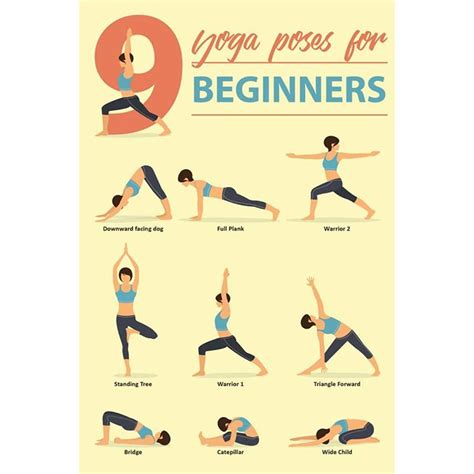The Untold Truths of Starting Yoga: What No One Talks About
Yoga is often seen as a calm and transformative practice, bringing about physical flexibility and mental tranquility. But behind the Instagram-perfect poses and serene mantras, there are layers of complexity that aren’t usually discussed openly. Whether you’re a complete beginner or looking to deepen your practice, there are some less-known realities and challenges you need to be aware of when starting yoga. In this article, we’ll dive deep into what no one says about starting yoga, from the misconceptions to the ethical considerations, providing a complete guide for all levels of practitioners.
Key Concepts in Yoga
Before you roll out your mat, it’s essential to understand the core concepts that shape the yoga practice. These key principles go beyond physical poses (asanas) and touch upon a broader philosophical and spiritual framework.
- Asanas: Physical postures designed to align the body, mind, and spirit.
- Pranayama: Breath control practices that help regulate the body’s energy.
- Yamas and Niyamas: Ethical guidelines and personal practices for self-discipline.
- Drishti: A focal point to develop concentration and awareness during practice.
- Chakras: Energy centers in the body that play a role in spiritual and physical well-being.
- Vinyasa: A style of yoga that links movement with breath.
- Bandhas: Energy locks used to retain and direct the flow of energy.
Each of these concepts contributes to the overall experience of yoga. Whether you’re trying to master a handstand or find mental clarity, these principles are foundational.
Historical Context of Yoga
Yoga’s roots trace back over 5,000 years, originating in ancient India. However, the form of yoga practiced in the West today differs significantly from its original intention. Historically, yoga was more than just a physical practice; it was a spiritual and philosophical path aimed at uniting the mind, body, and soul.
Key historical figures, such as Patanjali, compiled the “Yoga Sutras,” which laid the groundwork for yoga as a philosophical practice. Over time, the influence of Western fitness culture has shaped modern yoga into a predominantly asana-focused practice, sometimes neglecting its meditative and ethical dimensions. This historical evolution brings both opportunities and challenges to contemporary yoga practitioners.
The Current State of Yoga: Popularity and Misconceptions
Yoga’s rise in popularity has led to a booming industry, with yoga studios, apparel brands, and wellness retreats catering to millions. However, this mainstream adoption has also fueled several misconceptions.
- Misconception 1: Yoga is Just Stretching – While yoga includes stretching, its true benefits go far beyond that, involving strength, focus, breathwork, and mental discipline.
- Misconception 2: You Have to Be Flexible – Flexibility is not a prerequisite for yoga. The practice is about meeting yourself where you are and progressing at your own pace.
- Misconception 3: Yoga is a Quick Fix for Stress – Yoga can reduce stress, but it requires consistent practice and dedication to truly experience the mental benefits.
- Misconception 4: All Yoga is the Same – There are many types of yoga, each with different goals and techniques. For example, Ashtanga is more physically rigorous, while Restorative Yoga is more meditative.
These misconceptions can create unrealistic expectations for beginners, leading to frustration or abandonment of the practice. Understanding the full scope of what yoga entails is essential to avoid falling into these traps.
Practical Applications of Yoga: Integrating It into Daily Life
Yoga’s benefits extend beyond the mat and into everyday life. Here’s how you can incorporate yoga into various aspects of your daily routine:
- Mindfulness at Work – Pranayama exercises can be used during stressful work situations to maintain calm and focus.
- Body Awareness – Practicing yoga can enhance body awareness, helping to prevent injury and improve posture during daily activities.
- Breathing Techniques for Sleep – Incorporating pranayama before bedtime can promote deeper, more restful sleep.
- Mental Clarity in Decision Making – Meditation and yoga can improve your ability to make clear, thoughtful decisions by fostering a calm mental state.
Case Studies: Real-life Examples of Yoga’s Impact
To further understand how yoga can be transformative, here are some real-life examples of individuals who integrated yoga into their lives:
| Name | Challenge | Yoga’s Role | Outcome |
|---|---|---|---|
| Emma | Anxiety and Overthinking | Started a daily meditation and Vinyasa practice. | Gained better control over anxiety and developed coping mechanisms. |
| David | Back Pain from Office Work | Began practicing yoga to improve posture and stretch the spine. | Experienced significant relief in back pain and improved posture. |
| Sophia | Difficulty Focusing at Work | Integrated pranayama techniques into her daily routine. | Improved focus and work performance. |
Stakeholder Analysis: Who Benefits from Yoga?
Yoga affects multiple stakeholders, from the individual practitioner to broader societal and cultural structures. Let’s examine the key groups:
- Practitioners: Individuals who practice yoga, benefiting from physical, mental, and spiritual growth.
- Yoga Instructors: Professionals who teach and guide others in their practice, playing a crucial role in maintaining the quality and authenticity of yoga practices.
- The Fitness Industry: Yoga has become a significant part of the fitness industry, with brands, studios, and equipment manufacturers profiting from its popularity.
- Health Care Providers: Yoga is increasingly being integrated into therapeutic practices, supporting rehabilitation, mental health treatments, and overall wellness.
Implementation Guidelines: Starting Your Yoga Journey
Here are some guidelines for anyone starting yoga:
- Start Slow: Yoga is not about how fast you can move into a pose. Take time to understand your body and its limitations.
- Find a Qualified Instructor: Not all yoga instructors have the same level of expertise. Research and find someone who can guide you safely.
- Consistency Over Intensity: It’s better to practice for 15 minutes every day than to have a two-hour session once a month.
- Don’t Compare: Everyone’s yoga journey is different. Focus on your progress rather than comparing yourself to others.
- Invest in Good Equipment: A quality yoga mat and comfortable clothes can make a big difference in your practice.
Ethical Considerations in Yoga
Yoga’s growing popularity has brought up important ethical questions, such as the commercialization of an ancient spiritual practice. Additionally, there are concerns about cultural appropriation, where yoga is stripped of its spiritual roots and turned into a commodity.
To practice yoga ethically, consider the following:
- Honor Yoga’s Roots: Understand the historical and spiritual context of yoga, and treat it as more than just a workout.
- Respect Cultural Sensitivity: Be mindful of how you represent and practice yoga, especially if you are from a different culture.
- Inclusivity: Ensure that yoga spaces are welcoming and accessible to all, regardless of physical ability or background.
Limitations and Future Research in Yoga
While yoga has many benefits, there are limitations to the practice that warrant further research. For instance, while yoga can complement traditional medical treatments, it should not be seen as a replacement. Additionally, more research is needed to understand how yoga affects different populations, such as people with chronic diseases, pregnant women, and the elderly.
Future research can focus on:
- Yoga’s long-term effects on mental health conditions, such as depression and anxiety.
- Exploring yoga’s role in rehabilitative therapy for physical injuries.








